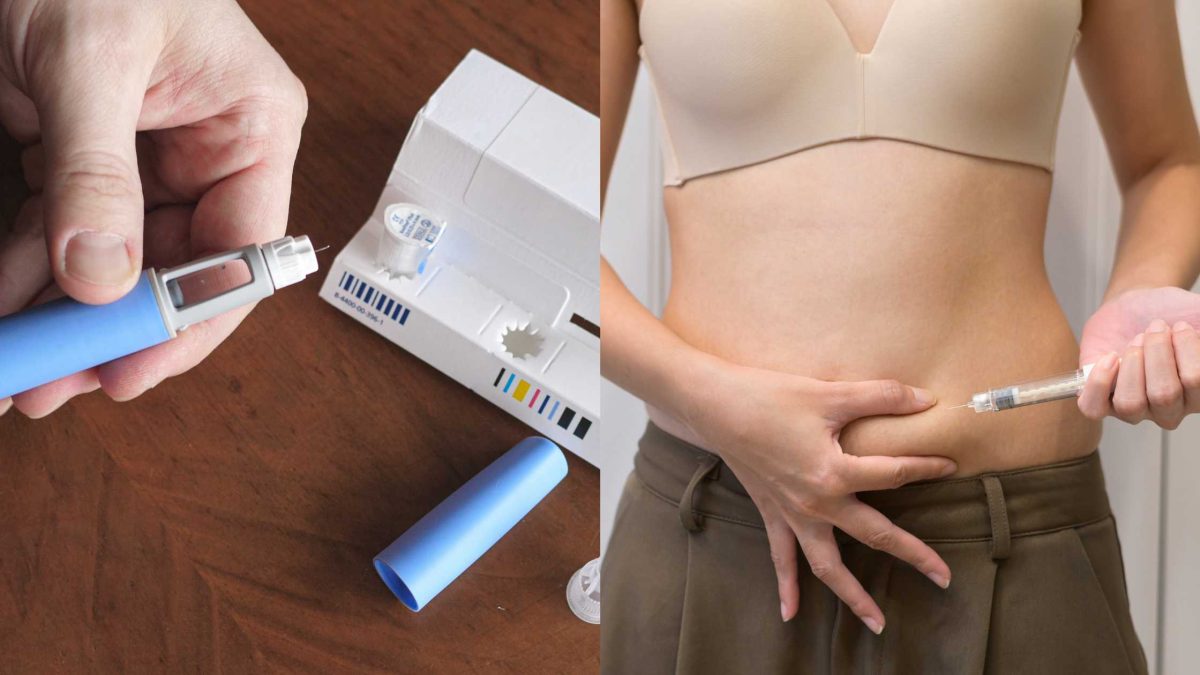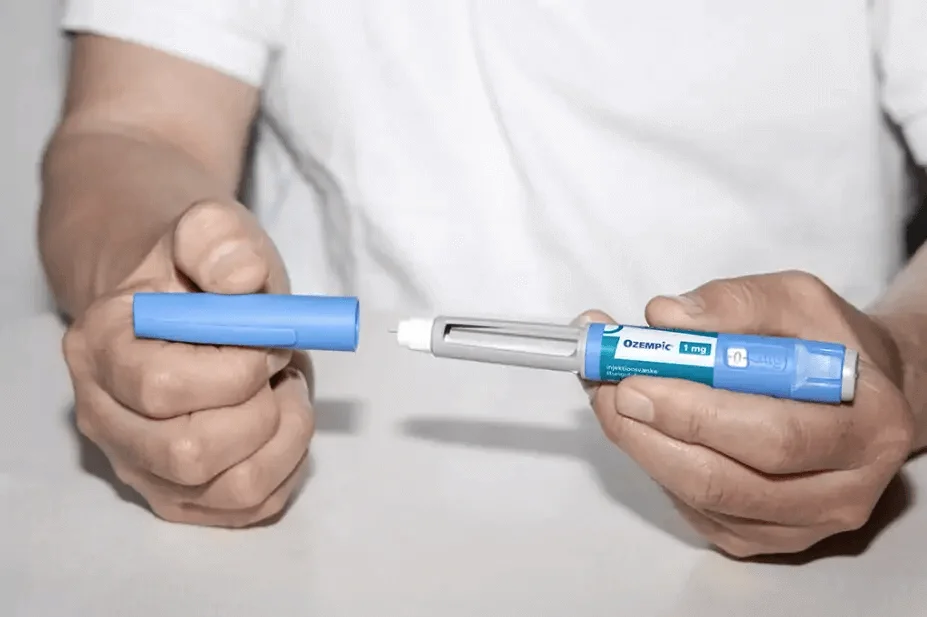Key Takeaways
-
Clear motivations for liposuction and realistic goal-setting prior to surgery can minimize the risk of disappointment and postsurgery depression. Write a short desired outcome to probable surgical outcomes list.
-
Evaluate mental health and past body image trends prior to surgery and contact a mental health professional if you observe symptoms of depression, anxiety, or body dysmorphia.
-
Anticipate an emotional rollercoaster post-op with highs of euphoria, the post-op blues, impatience, and eventual acceptance. Track mood changes in a journal and use incremental milestones to stay grounded.
-
Develop a support system of trusted individuals and organize pragmatic coping mechanisms such as mindfulness, light activity, and routines to navigate emotional swings throughout recovery.
-
Keep your body image in check through objective measures, such as questionnaires and reflection on social pressures, to disentangle your satisfaction from whether others are impressed.
-
Get professional help early if feelings persist or intensify, wait and avoid quick followup surgeries, and invest in long-life wellness habits to maintain physical and mental recovery.
Liposuction and mental health dealing with post-surgery emotions describes the roller coaster of feelings folks encounter following body-contouring surgery. This emotional response can be one of relief, sadness, anxiety, or disappointment.
What molds those reactions are your expectations, pain, how quickly you recover, and the support you receive from others. Understanding these trends allows patients and their families to anticipate coping strategies and, if necessary, professional assistance.
The feature details common feelings, warning symptoms, and pragmatic assistance.
Pre-Surgery Mindset
Going into liposuction with a well thought out mindset sets up clear expectations for your recovery and lasting happiness. Pre-Surgery Mindset — Clarify why the procedure feels necessary, think through likely emotional shifts and build practical strategies for lifestyle change. Align intentions before the operating room.
Realistic Goals
Establish specific, limited expectations about what liposuction will and won’t accomplish. Prepare to have your shape transformed, not perfected. Be ready for scars, swelling, and a restricted degree to which body fat can resettle.
Don’t employ surgery to pursue the fantasy that has fueled multiple diets or self-loathing. Understand that results differ based on anatomy, skin laxity, and post-op care.
Bullet list of desired outcomes and likely surgical results:
-
Minimize stubborn fat bulges. There is a mild to significant reduction in targeted zones.
-
Better silhouette in clothes — Looks different, perhaps not as you imagined.
-
Give you self-confidence. This is usually enhanced in the short term, but it can plateau at nine months without ongoing support.
-
Address issues such as obesity. This is not a solution for systemic weight loss or metabolic conditions.
-
Remove stretch marks — Improbable. Skin texture might not totally normalize.
Mental Health Check
Pre-surgery mindset: Evaluate mental health prior to surgery to minimize the risk of dissatisfaction. Screen for ongoing depression, anxiety, or body dysmorphia. Prior body image issues forecast emotional reactions to change.
If a patient has diagnosed depression or is likely to have body dysmorphic disorder, then have an honest discussion with a psychiatrist. Around 15% of cosmetic patients suffer from undiagnosed body dysmorphic disorder, increasing their risk for low post-operative fulfillment.
|
Emotional Strengths |
Vulnerabilities |
|---|---|
|
Clear short-term goals |
Perfectionist tendencies |
|
Good coping skills under stress |
History of mood swings |
|
Strong support network |
Prior body image distress |
Track behaviors such as mirror checking, social avoidance, or excessive dieting. They’re all warning signs to get checked out by a professional before moving forward. A pre-surgery mindset check reduces the likelihood of regret and enhances results.
Why Surgery?
Figure out the underlying emotional momentum driving toward aesthetic transformation. Is it to feel more confident, to conform to cultural norms, or to answer to pressure from partners or friends?
Separate temporary feeling better from long-term mental healing. Surgery can solve your appearance issues, not your underlying self-esteem issues. Reflect on previous weight-management efforts, workout routines, and their psychological impact. Did rebound spikes and crashes induce guilt or fortitude?
Develop plans to support change: commit to post-op exercise and nutrition, set therapy or coaching check-ins, and name who will assist during recovery.
Develop mental toughness by pre-playing potential mood swings and stressors. Anticipate emotions to fluctuate over days, weeks, and months as swelling subsides and the brain adjusts. A reliable circle can buffer and ease day-to-day living, minimizing stress and helping with long-term adjustment.
The Emotional Rollercoaster
Liposuction recovery can be an emotional rollercoaster as your body heals and you experience a variety of sensations. Anticipate everything from ecstatic elation to profound slumps. A study finds that almost one third of patients experienced unforeseen emotional highs and lows following surgery. Keeping track of these shifts helps to make sense of them and indicates when additional support is necessary.
1. Initial Euphoria
A confidence rush can be quick to arrive once some initial results show up. Patients frequently tell us they feel euphoric, proud, and relieved when contour changes emerge. Research finds that approximately 80% experience increased body satisfaction post-surgery. That high can boost mood, increase social fluidity, and promote temporary happiness.
The rapid emotional gratification can mask deep-rooted anxieties. The placebo effect of witnessing change can lift a mood in the short term, even if underlying body image concerns fester. Anticipate this high to be time limited, so set realistic expectations that make the drop from the high less harsh.
2. Post-Op Blues
As swelling, pain, and inactivity take hold, spirits can sink. One day a patient feels like conquering the world, the next feels resentful about pain. This emotional rollercoaster is typical. Triggers are delayed swelling, slow healing, or being forced to remain home and rest.
Other studies connect inflammation and aches to emotional whipsaws in those initial weeks. Watch for signs that go beyond normal blues: persistent sadness, losing interest in usual activities, or pulling away from friends. These can presage postoperative depression and might require professional assistance.
3. Impatience
Recovery is a small step at a time and skin pulls back slowly. Frustration ensues when clothes still fit weird or contours shape-shift for weeks to months. That impatience can cause you to make bad decisions, such as crazy diets, too aggressive of an activity push too soon, or comparing yourself to another’s early pictures.
Use small, clear milestones to stay grounded: day-by-day mobility goals, weekly journal notes on swelling, or timed photos under consistent light. Simple habits such as mindful breathing or brief yoga stretches alleviate tension and restore a sense of control.
4. Body Dysmorphia
Some patients remain preoccupied with imperfections even with improvement. Contrast pre-op unhappiness with how you feel today. Have you gotten better at feeling like your new self? Body dysmorphic indicators are mirror checking, excessive reassurance seeking, or surgical regret combined with continued distress.
Body satisfaction and confidence gains observed in numerous studies cannot wipe away ingrained thought processes. Therapy specifically targeting your body image can help redirect your attention from flaw-hunting onto healthy self-care.
5. Final Acceptance
Slowly acceptance comes as the swelling dissipates and form solidifies. Confidence boosts seem to materialize for a bunch, with around 30% experiencing increased self-confidence in research. Cultivate upkeep habits, tender inner dialogue, and community backing to maintain progress.
Release old self-judgment and establish a practical, loving body image.
Body Image Shift
Liposuction typically delivers fast, dramatic change in body contour and that change alters the way people see themselves. Most patients see a shift in weeks—not just in contour, but in the way they visualize their bodies. This can result in a re-engineered body image shift—the internal map of scale, form, and motion—that influences how you navigate the world, what you wear, and how bold you feel around people.
For some, the new shape aligns with years of self-images and minimizes focus on particular regions, but for others, it illuminates new areas where expectation and reality diverge, inciting new concern or accommodation.
A concrete way to track these shifts is with body shape questionnaires that measure satisfaction, drive for thinness, and related attitudes. Below is an example table that displays typical questionnaire results before and after surgery based on pooled findings from clinical studies:
|
Measure |
Pre-surgery (%) |
Post-surgery (6 months) (%) |
|---|---|---|
|
Drive for thinness (abnormal) |
48 |
25 |
|
Body dissatisfaction |
72 |
19 |
|
Reported body satisfaction improved |
— |
86 |
|
Higher self-esteem scores |
— |
Increased (significant) |
|
Reduced eating disorder risk |
— |
Reduced (significant) |
Cultural standards of beauty set the tone well before the clinic appointment. Constant cultural messaging that thin or some shapes equals success, attractiveness, or health predisposes patients to hone in on “bad fat,” which has a real psychological toll.
Unwanted focus on these areas from remarks, pictures, or self-judgment connects to elevated body image concerns and can nudge individuals toward cosmetic surgery. Acknowledging this force assists clinicians and patients in disentangling intrinsic ambitions and extrinsic coercion.
Using questionnaires repeatedly offers practical benefits. Baseline scores show preoperative risks. Nearly half showed an abnormal drive for thinness and most reported dissatisfaction.
Repeat assessments at weeks and months track trajectory. Many patients show improved satisfaction within weeks. Measurable gains in self-esteem and lower blood pressure have been reported within weeks as well. At six months, studies report about 86% felt more satisfied and a marked drop in eating disorder risk.
These tools flag when expectations are unrealistic or when psychological support is needed. Concrete actions would be to give a short body image questionnaire pre-op, repeat at early follow-up (2–6 weeks), and again around 6 months.
Take results to inform counseling, goal setting, and mental health referrals if scores worsen or fail to improve. This organized tracking makes the emotional trajectory post-liposuction transparent and manageable.
Navigating Recovery
Liposuction recovery necessitates not only physical care but mindfulness toward emotional changes. Expect a range of feelings as the body heals. Many emotional changes last only a few days to a few weeks, mood swings affect almost one third of patients, and longer-term psychological benefits often peak around nine months.
Map out a schedule that approaches recovery as a combined physical and psychological endeavor.
Build Support
Build your bod squad, which should contain at minimum a good friend, a relative, and a trusted clinician. Participate in online or local support groups where members have undergone cosmetic procedures. Sharing the emotional rollercoaster with peers who understand the unique stress of body-image alteration normalizes your reactions and de-isolates you.
Promote open discussions of fears, hopes, and disappointments. Frank dialogue reduces the likelihood of repressed worry.
-
Trusted contacts for emotional reassurance:
-
Main surgeon or nurse for medical questions.
-
Licensed therapist or counselor who has worked with body image.
-
Close friend for daily check-ins.
-
Group or forum with moderated discussion.
-
Nutritionist for recovery meal planning.
-
Around you are people who will remind you of medicine schedules and others who can simply sit with you during a rough day.
Practice Patience
Recognize that external success and internal peace occur on different timelines. Physical swelling can mask contour changes for weeks, and emotional healing traces a similar slow curve. Focus on small, steady gains: improve sleep, eat nourishing meals, and add light activity as advised.
Don’t compare to others or to unrealistic standard-setting images. Research indicates that around 30% of patients have a self-esteem boost post-liposuction, but that varies. Celebrate each stage: one small win might be sleeping through the night, wearing a preferred outfit, or noting fewer negative thoughts.
Use affirmations — short declarations such as ‘My body is healing’ or ‘I am more than my body’ — to foster strength.
Seek Help
Know the early signs of distress: persistent sadness, withdrawal, trouble sleeping, or return to obsessive dieting or overexercise. Track emotional highs and lows by journaling daily to identify trends, which helps determine when external assistance is required.
Contact us if symptoms persist after a few weeks or your recovery feels stuck. While 80% of patients experience depressive symptoms that get better within six months, a subset requires treatment earlier.
Lean on resources like therapists, crisis lines, or surgical aftercare teams. Watch for relapses into unhealthy eating or exercise and set clear goals.
The Social Mirror
Liposuction doesn’t happen in a vacuum. Social feedback and cultural norms influence how individuals experience post-op feelings. Cultural ideals regarding figure and beauty can raise expectations and create rigid standards against which to measure accomplishment.

Others experience a more mixed transition, noting a clear departure from old body suffering within months, but describing an uptick in confidence and reprieve from old self-deprecating narratives that have been embedded for years. For them, others’ compliments and peer gazes only sharpen concentration on residual flaws, causing attention to veer from actual progress to nitty-gritty.
Handle friend, family, and acquaintance comments by prepping responses and boundaries. Expect a range of remarks: praise, surprise, curiosity, or thinly veiled judgment. Anticipate neutral responses and deflect talk away from your body when necessary.
If flattery rings false or folks measure you against pictures, label the tangent and switch it. If family members worry or try to police your decisions, be explicit about your motivation and recovery requirements. Among the practical tips, practice a few canned statements, request privacy during early healing, and avoid overly anxious individuals.
Separate personal satisfaction from external validation by following your own targets and metrics. Before surgery, list concrete aims: clothing fit, physical comfort, or surgical risk tolerance. Post-surgery, consult these same metrics, not comments or likes.
Personal satisfaction tends to rack up and then level off around nine months. Many experience enhanced self-esteem, but enduring satisfaction is hit or miss. Roughly 19% of women in certain follow-ups reported regret. Save photos, measurements, and notes to track progress against your baseline, not the feed.
Social media and beauty standards influence our criteria for success. Feeds provide curated before-and-after pictures and quick eager progress that can warp timelines. Mood shifts are typical in the initial weeks.
More than half of study participants reported mood swings, anxiety, or transient depression, with as many as 30% suffering significant emotional distress. Hormonal changes and frustration with slow surface results can contribute to unexpected sadness or impatience.
Research indicates mood begins to lift within weeks, and under 50% of those depressed initially are still so after six months. In general, emotional disruption dissipates within a few days to a couple of weeks, and many settle by six to 12 weeks.
For those whose distress persists, proactive steps help: discuss symptoms with a surgeon or primary clinician, seek brief psychotherapy or support groups, and limit comparison with edited images.
When Results Disappoint
Patients anticipate an instant transformation post-liposuction and instead encounter a gradual, bumpy healing process. Most experience swelling, bruising, and uneven contours during the initial days and weeks. Complete results may take weeks to months to manifest. This divide between what we hoped would happen and what actually happened is the primary source of disappointment.
For others, enhanced swelling or apparent scarring exacerbates anxiety. Some are disappointed that their body still does not look like their pre-surgery mental photo.
Address feelings of dissatisfaction or unmet patient expectations after aesthetic liposuction
Disappointment can manifest itself as irritation, nervousness, or depression. A lot of patients anticipate a quicker return to a smooth silhouette and are surprised when the treated areas are still swollen or lumpy. Others say they are angry at bruises or temporary scars that were not in the game plan.
Mood swings and fatigue are common in the days and weeks following the surgery. Usually, these feelings subside within a few days to two weeks, but the impatience can be at its worst around that two-week mark. About thirty percent of patients experience an early surge in self-esteem; a few wrestle with darker emotions.
Normal blues appear as low energy, changes in sleeping, or irritability and can persist for one to three weeks. Patients can shift rapidly from being petrified about results to being thrilled with visible change the following day, which is a healthy fluctuation in healing.
Reframe negative emotions by focusing on health and wellness gains beyond physical appearance
Turn your focus away from immediate aesthetics towards functional and health gains. Liposuction relieves fat-related discomfort, enhances body contours, and facilitates exercise. Track non-visual progress: increased mobility, less chafing, or improved fit of clothing measured in centimeters.
When results disappoint, use objective markers like range-of-motion tests, timed photos, or clothing to demonstrate incremental change. Celebrate small wins, such as swelling down a month later, standing straighter, or playing without pain. This framing helps temper the impulse to evaluate accomplishment purely by its surface.
Avoid impulsive decisions for additional surgery or unhealthy behaviors in response to disappointment
Immediate reoperation or crash dieting just makes things worse. Allow tissues to settle, as premature touch-ups can be hazardous and even contraindicated until complete healing at three to six months. Don’t resort to hard workouts or crash diets designed to beat the change along at a quicker pace.
Talk to the surgical team before making decisions. Think about waiting and seeking second opinions from competent professionals. If you’re tempted to hurt yourself or turn to drugs or alcohol to dull the pain, get help immediately.
Develop a plan for ongoing self-care and psychological support to maintain emotional balance
Develop a recovery plan with timelines, follow-up visits, and mental health check-ins. If results disappoint, manage mood with mindfulness, gentle exercise, sleep hygiene, and social support.
Consider brief therapy or support groups if negative feelings last more than three weeks or impact your daily functioning. Maintain a ‘recovery journal’ to record symptoms and progress in centimeters or kilograms where applicable and share it with your provider to direct treatment.
Conclusion
Liposuction reshapes a body quickly. It has the potential to awaken vivid emotions. Anticipate a cocktail of optimism, apprehension, catharsis, and insecurity. Monitor mood and sleep. Discuss with a dear friend or counselor. Notice little victories like reduced pain, less tight clothes, or increased energy. Attend follow-ups and don’t be afraid to share honest feelings with your surgeon. If results fall short, list options: touch-up, physical therapy, or therapy for body image. Use slow goals: wear a favorite outfit, walk a little farther, or join a low-key support group. Emotional care is as important as wound care. Contact if emotions turn serious or linger beyond a few weeks. Seek assistance early and address your psyche with as much diligence as you do your physique.
Frequently Asked Questions
What mental health changes should I expect after liposuction?
Other typical transformations incorporate mood swings, anxiety, relief, and temporary depression. These can often arise from anesthesia, pain, sleep disruption, and body-image adjustment. Most get better in weeks, but keep an eye on symptoms and get help if they linger.
How long do post-surgery emotions usually last?
Strong feelings tend to reach their zenith during weeks 1 to 3. Emotional recovery usually gets better within 6 to 12 weeks when the swelling subsides and healing occurs. If symptoms persist or worsen beyond 3 months, you may require professional support.
When should I contact a mental health professional after surgery?
Reach out sooner if you have lasting depression, anxiety, or thoughts of suicide, or if emotions disrupt your life for several weeks. Seek assistance for intense panic, insomnia, or dramatic mood swings as well.
Can I reduce emotional distress before surgery?
Yes. Get ready with reasonable expectations, pre-op counseling, a great support system, and recovery planning. Open dialog with your surgeon about post-surgical results reduces stress and assists with emotional adjustment.
How can friends and family best support recovery?
Provide actionable support, non-judgmental listening, emotional validation, and promote rest and follow-up care. Assistance with errands and appointments is important. Resist the urge to push for instant social outings or validation about your body.
What if my results don’t match my expectations emotionally?
Discuss concerns with your surgeon first to rule out medical causes. Consider counseling or support groups for body-image adjustment. Revision surgery is an option only after full healing and careful evaluation.
Are there coping strategies to manage body-image shifts?
Yes. Try using realistic self-talk, limiting comparisons, focusing on function and health, and being mindful. Setting achievable short-term goals and seeing a professional therapist can help you recover emotionally and improve your self-image faster.















